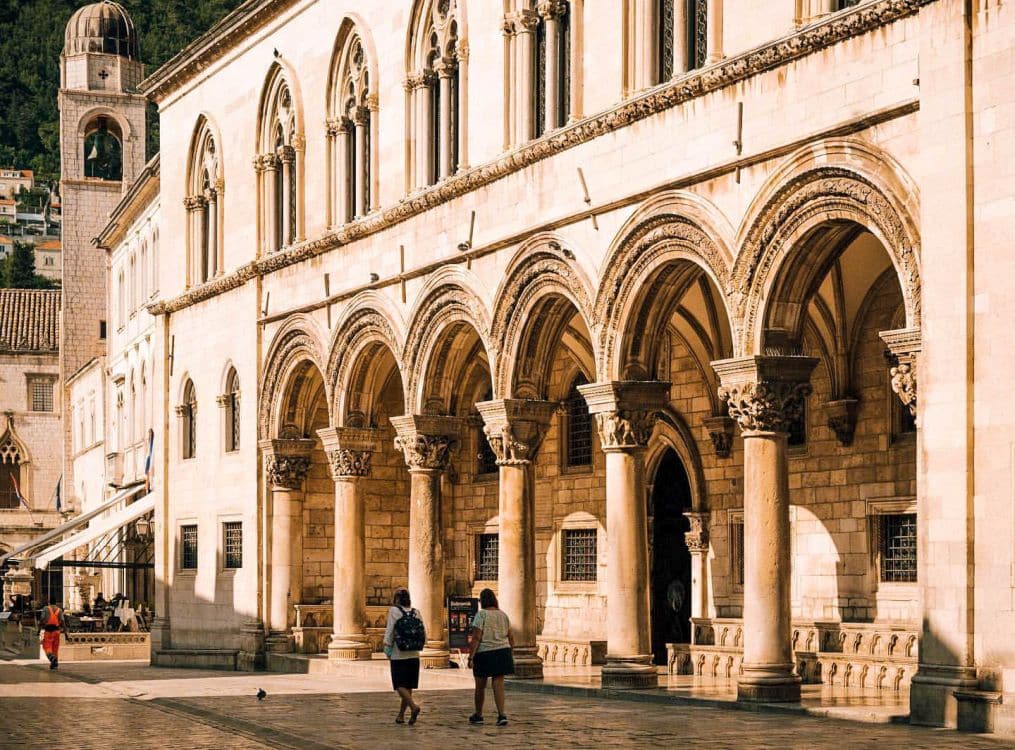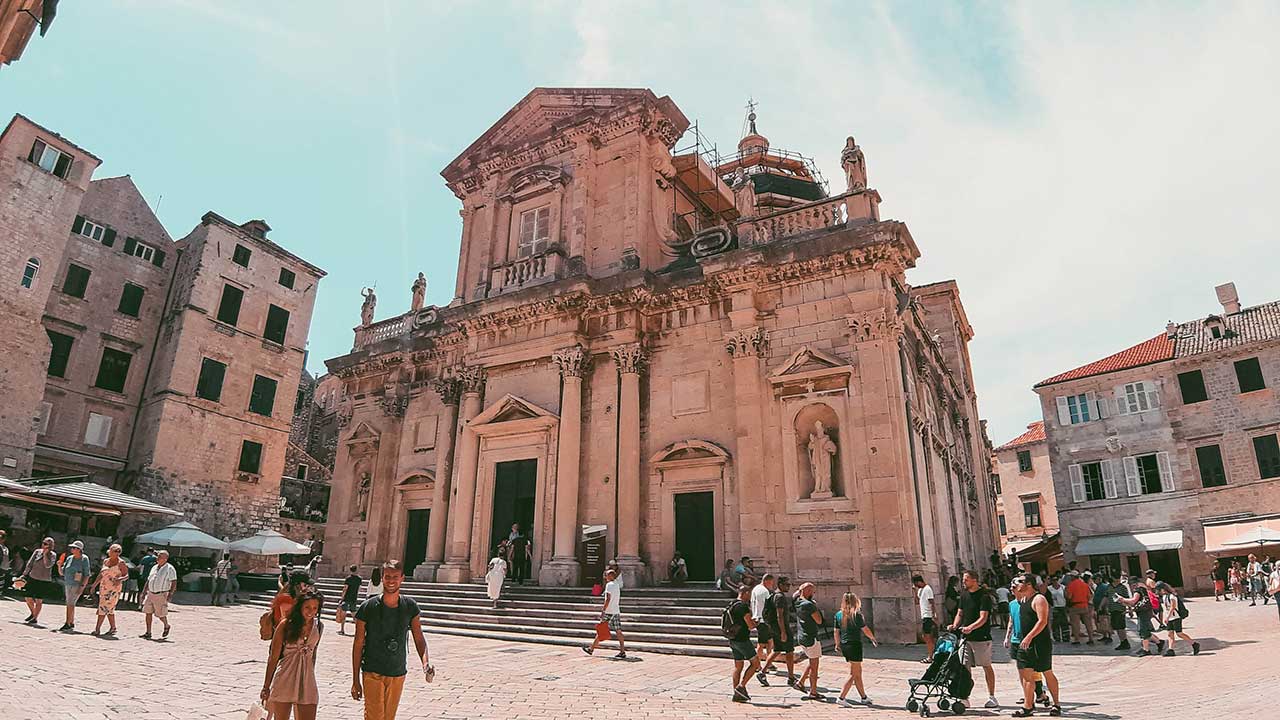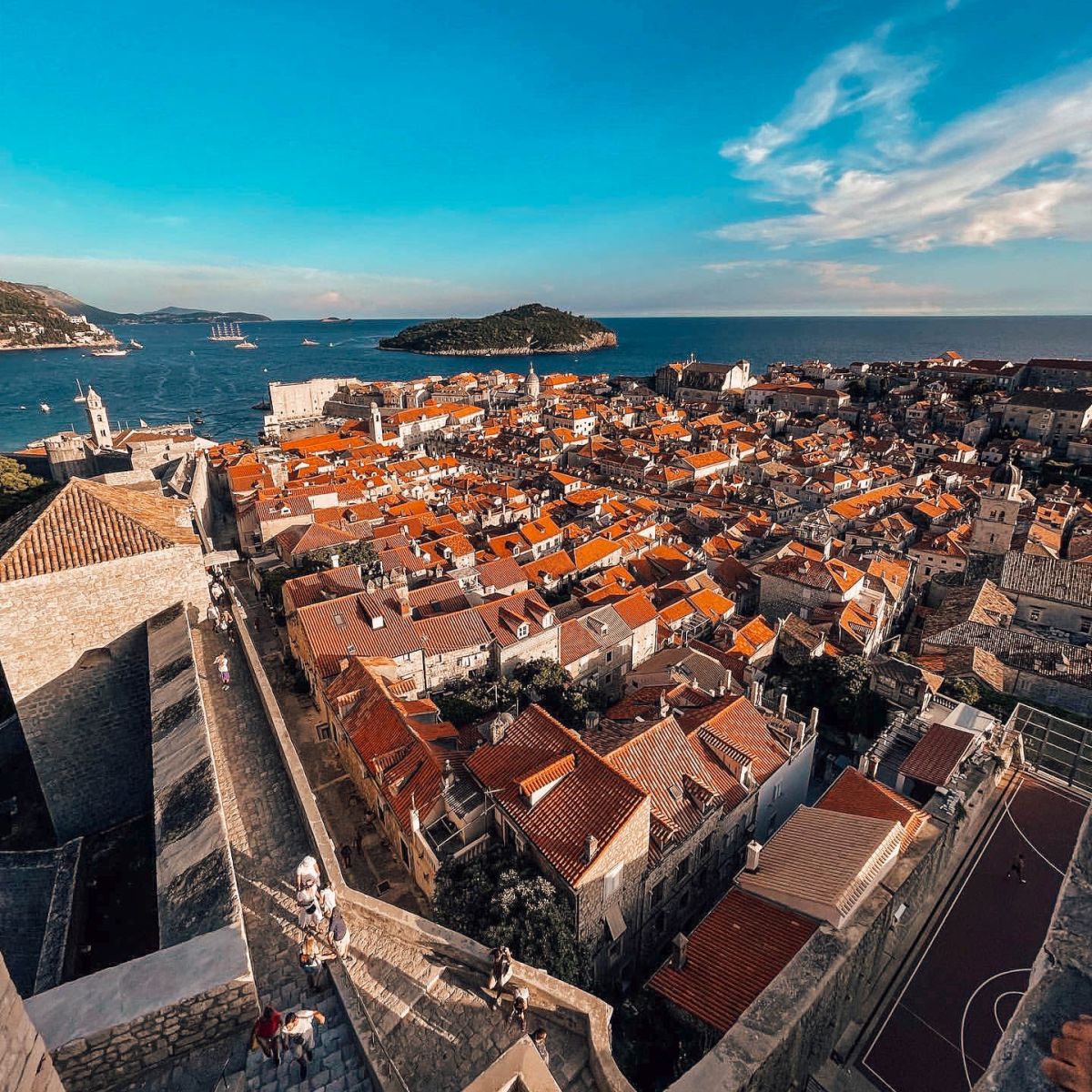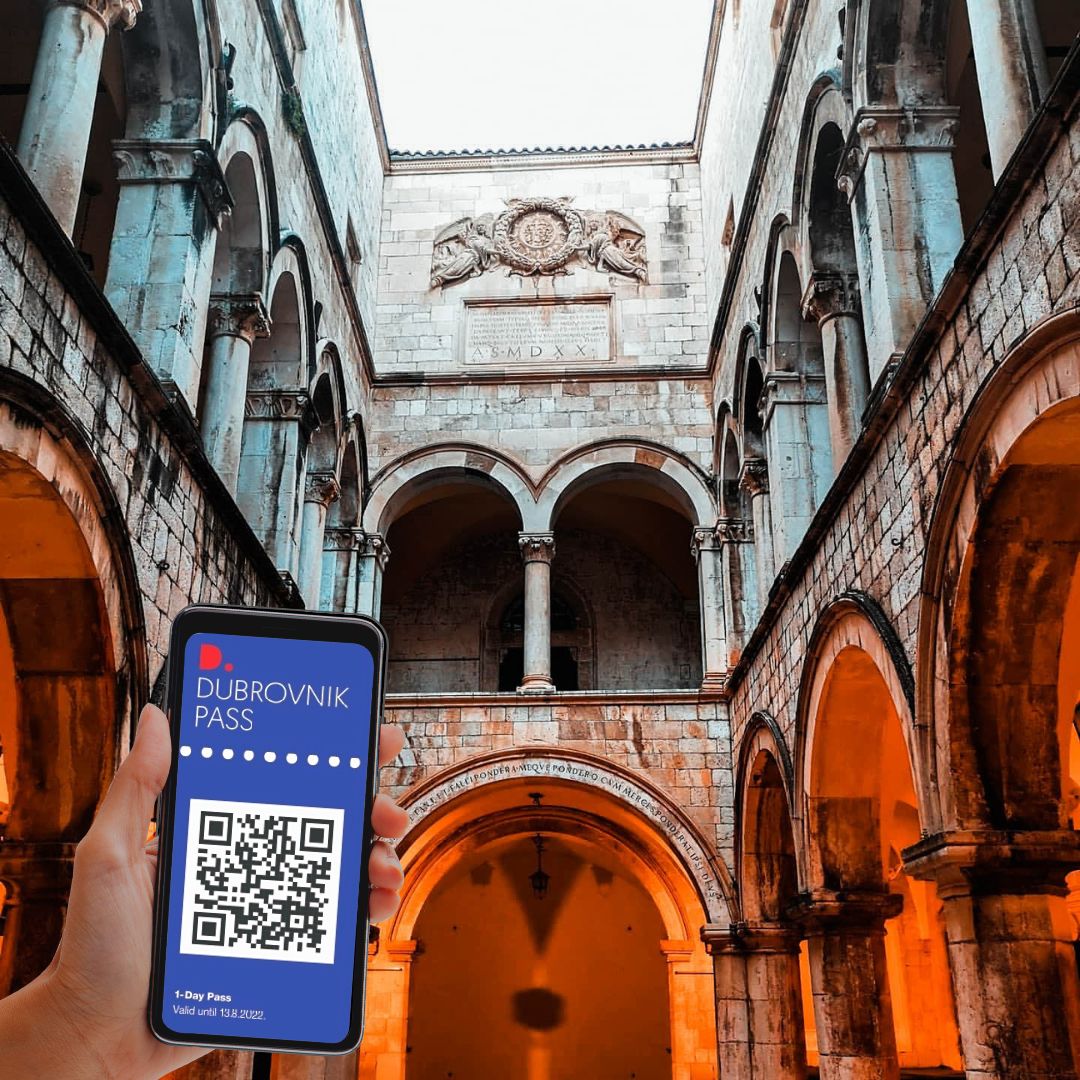The Dubrovnik Cultural-Historical Museum is located in the beautiful historical building - the Rector’s Palace - which is worth a visit in itself. The Palace reflects the incredible history of the Old Town. My top choice for museums in Dubrovnik.
A must-see for travelers in Dubrovnik!
| Phone | +385 20 321 497 |
| Address | Pred Dvorom 3 |
| Hours | 9:00-18:00 (09:00-16:00 in the winter). |
| Price | Single ticket - Adult €15 / Child €8 |
| Price | Multimuseum pass - Adult €20 / Child €8 |
Plenty of exhibits offer a fascinating insight into how the city worked centuries ago. You can also learn about the city’s laws and politics and how they have changed over time. Fascinating exhibits are spread over the ground floor, mezzanine, and first floor, including an inner courtyard and a dungeon on the ground floor.
The upper floors boast an array of artworks, artifacts, weapons, armor, coins, old documents, and gorgeous furniture. I was particularly intrigued by the rooms full of safes and strongboxes with complex lock designs and elaborate ornamentation.
It’s included in the Dubrovnik Pass, which I strongly suggest you buy if you plan on visiting the City Walls. And let’s be real. Who visits Dubrovnik and doesn’t go on the Walls? So there’s no excuse not to go!
Tip
If you’re looking to explore everything you can, the Dubrovnik Museums pass is a great alternative to Dubrovnik Pass to visit the city museums. For just €20, you can access nine different museums over seven days.
Rector’s Palace
The Rector’s Palace has a fascinating history. It was the seat of the government and residence of the Prince (Rector) of the Dubrovnik Republic.
Good to Know
The history of Dubrovnik as an independent city-state situated on the east coast of the Adriatic lasted until 31st January 1808, when a decree issued by Napoleon’s army dissolved the centuries-old Dubrovnik Republic.
As the head of the executive branch of government (Small Council - Consilium Minus), the Rector of the Dubrovnik Republic was elected for one month of office. Foreign affairs were managed by the Senate (the Council of the Rogatory - Consilium Rogatorum), while the legislature was the responsibility of the Parliament, which comprised all members of the Dubrovnik nobility from the age of 18 (Great Council - Consilium Maius).
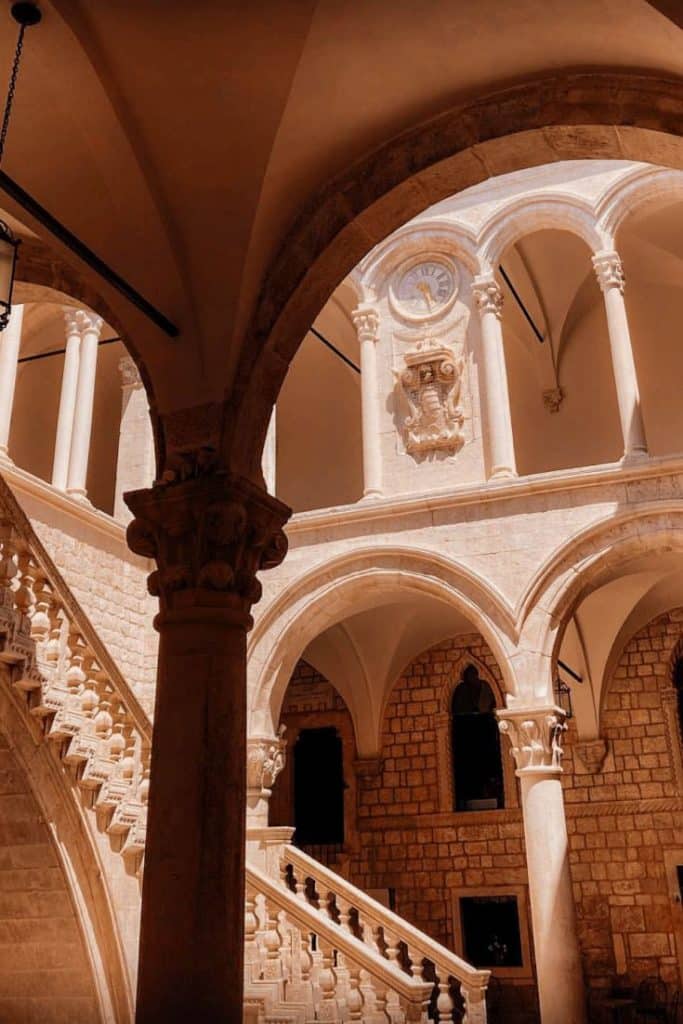
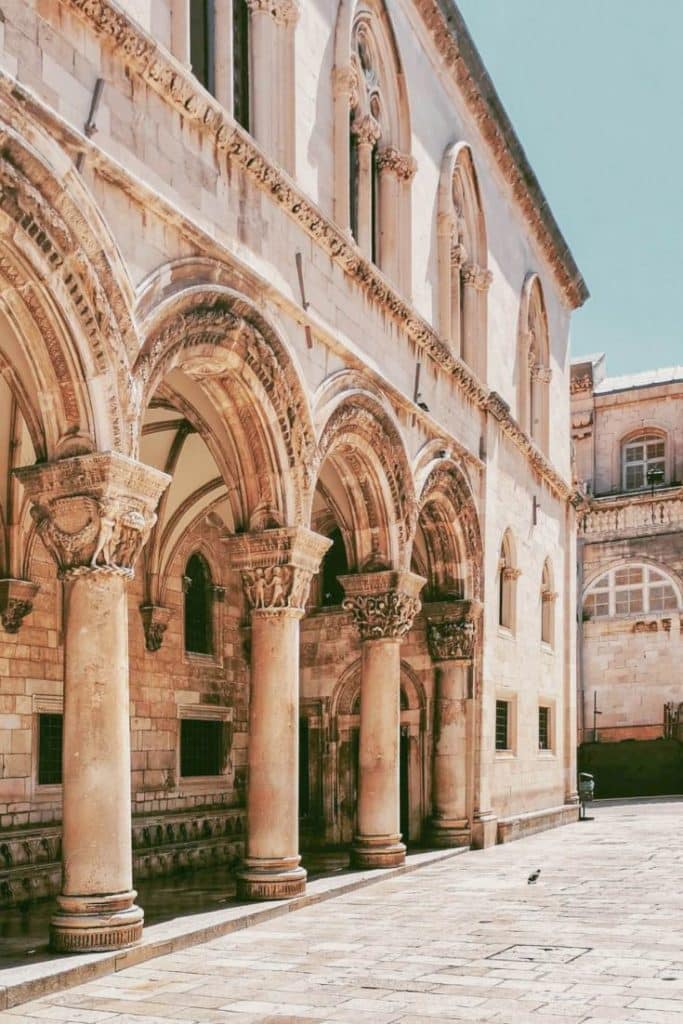
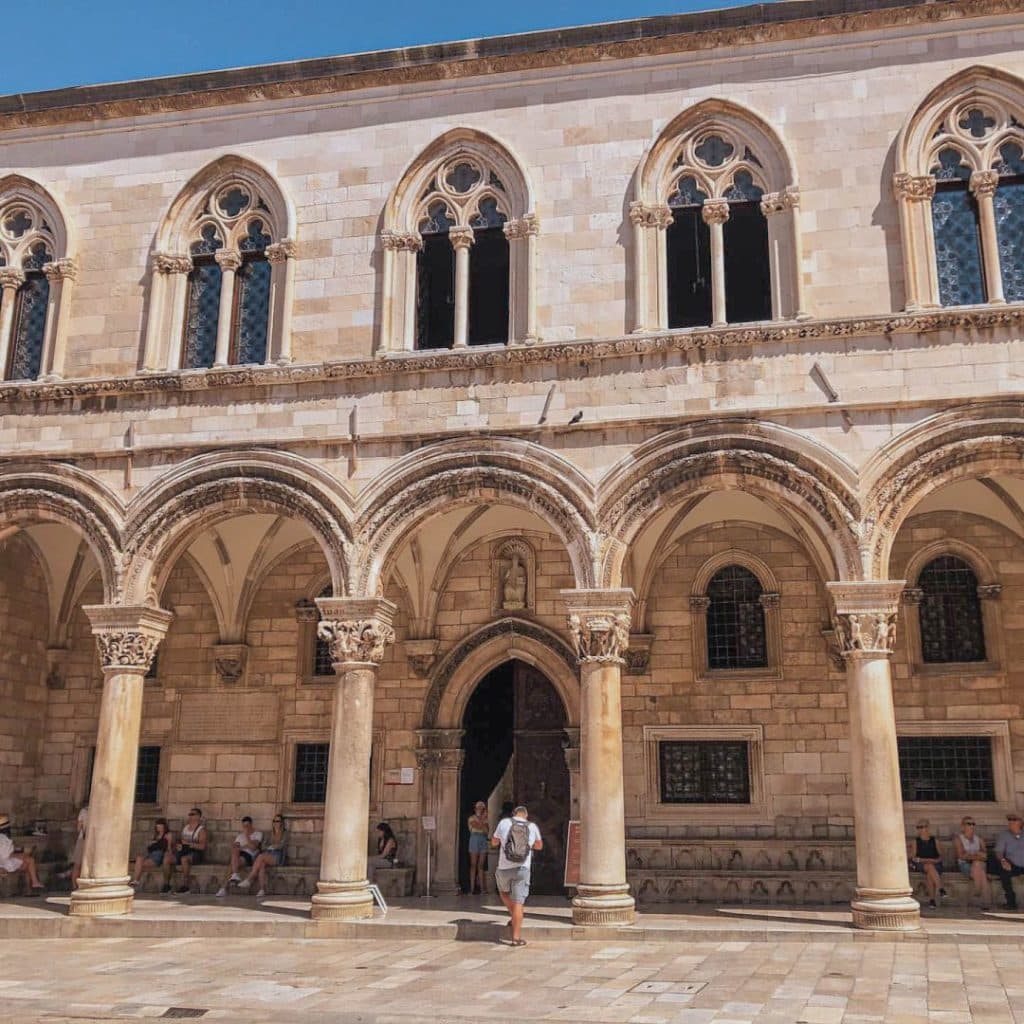
According to records dating from the 13th century, a “castellum” surrounded by four corner towers was once located on the site on which the Rector’s Palace is today. The reconstruction of the fortress into the palace took place in the 14th century.
Interesting Tidbit
The palace was modeled on the Roman imperial royal residences and the Venetian palaces (in its middle section, the main façade opens into a portico with two side towers).
The palace received its present form (a single-story building with four wings closing the courtyard - an entrance with a small mezzanine floor gallery and a large floor gallery) in the mid-15th century during the reconstruction following the demolition of the old Rector’s Palace in the gunpowder explosion of 1435.
The new Rector’s Palace was built in the late-Gothic style by Onofrio de la Cava, an architect from Naples who also created the waterworks and two public fountains in Dubrovnik (1435-1440). The statue on the building is probably the work of Pietro di Martino, an architect, and sculptor from Milan.
Interesting Tidbit
The building was hit by more major damage in 1463 due to another gunpowder explosion. It was also severly damaged again in the great fire of 1667, which ravaged the town.
The reconstruction of the Rector’s Palace after the explosion of 1463 included the work of two renowned artists, M. Michelozzo from Florence and Juraj Dalmatinac from Zadar.
But, unfortunately, the Palace was not rebuilt according to Michelozzo’s design. Many local craftsmen (Radko Ivančić, Juraj Dalmatinac, Vukac Bogosalić, and Radoje Pribilović) worked on completing it.
The new style of architecture - the Renaissance - left its mark on the building only in small details. At the same time, the façade towers were made shorter to be leveled with the middle section of the building. As a result, the vertical Gothic form gave way to the pronounced horizontal layout of the Renaissance style.
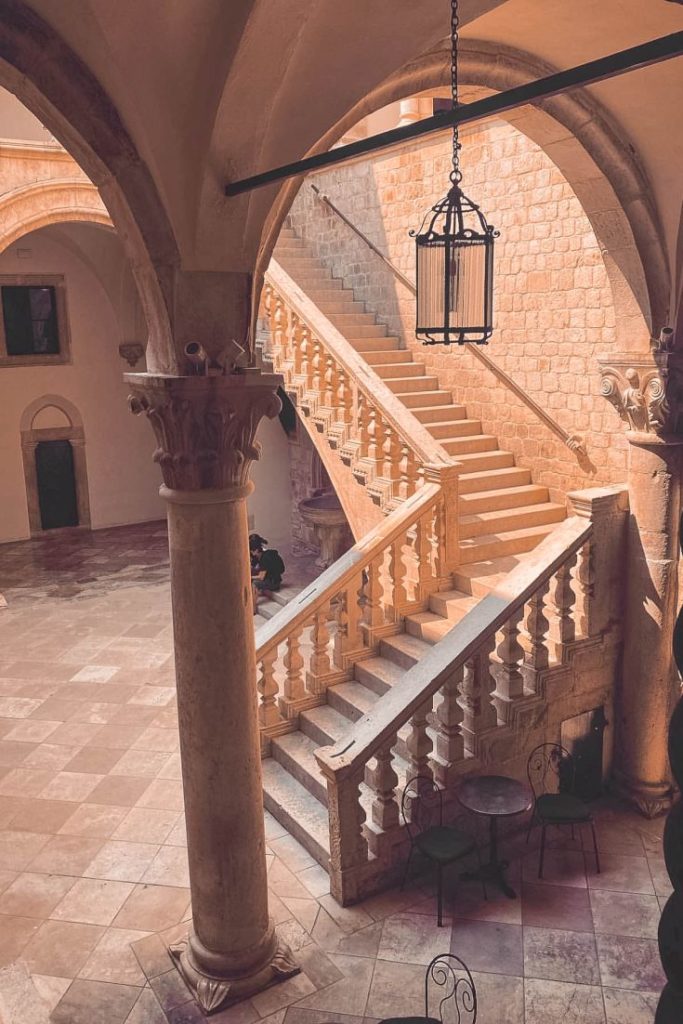
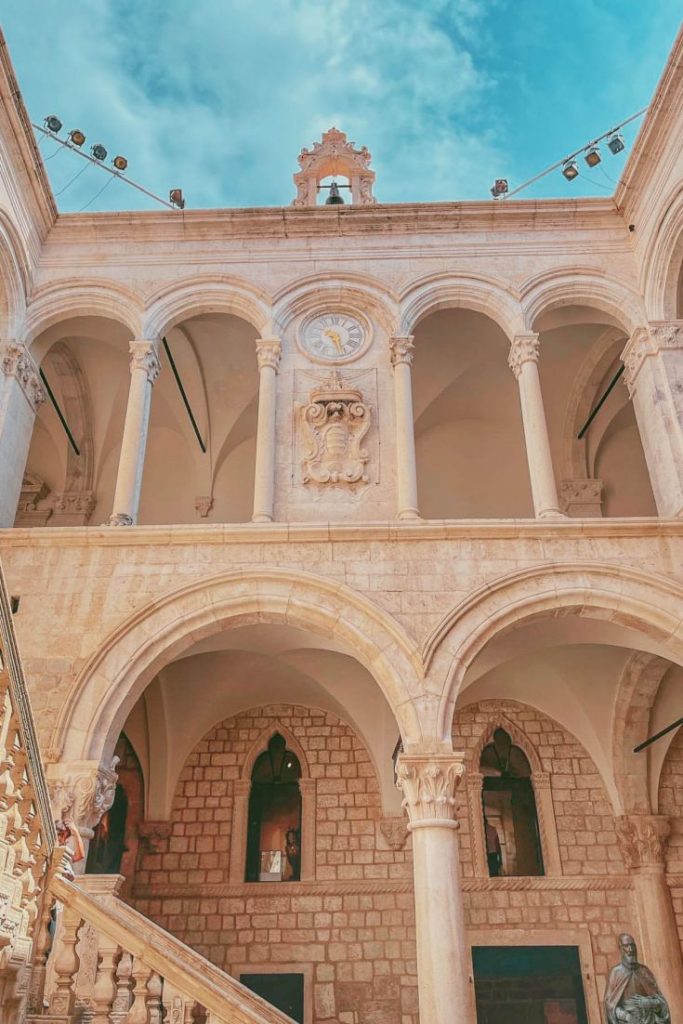
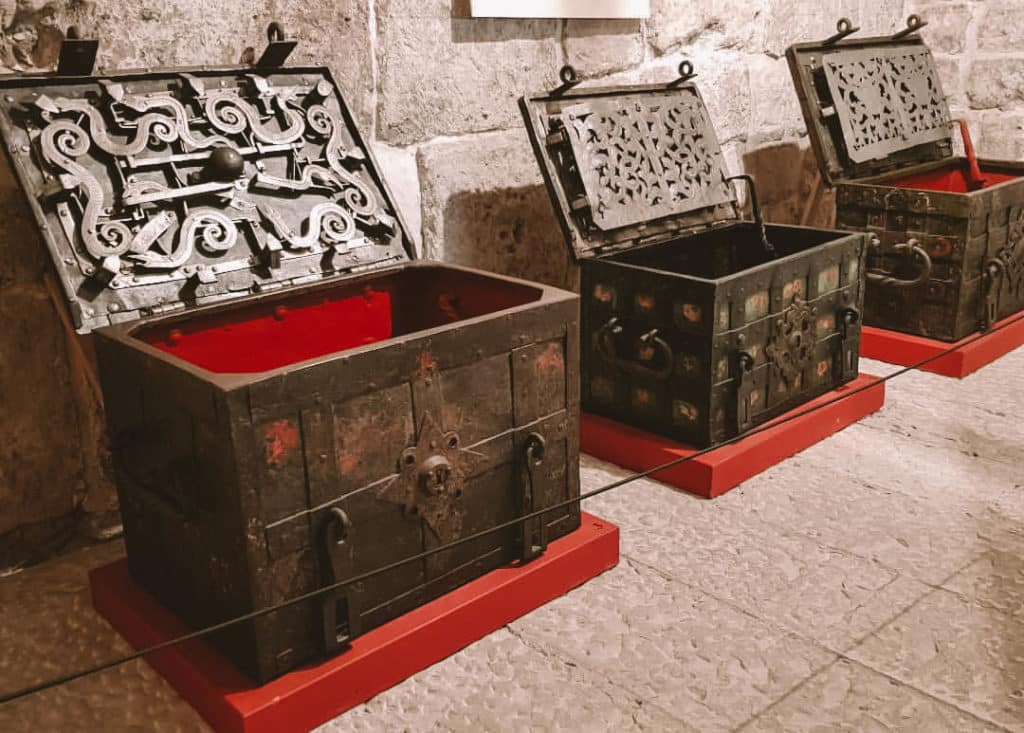
The disastrous earthquake of 1667 mostly damaged the building’s interior, namely the columns and arches of the courtyard and the galleries. It was reconstructed towards the end of the 17th century in Gothic style, with some Baroque elements.
The last reconstruction of the building took place in 1982 following the earthquake of 1979.
Interesting Tidbit
In the courtyard of the Palace is the statue of Miho Pracat, a wealthy and renowned sailor who left all his fortunes to the Republic. It is the only monument ever erected to a Dubrovnik citizen during the Republic, even though the Republic did not like to give importance to any individual, only the collective.
In the Dubrovnik Republic, the ground floor of the Palace housed the state offices, the notary’s office, the law court, and the jail. The old armory and the Small Council hall were situated on the mezzanine floor of the southern wing. The eastern wing of the mezzanine floor housed the court guard.
Tip
Rector’s Palace courtyard is a frequent concert hall. Dubrovnik symphony orchestra and various world classical musicians play for an intimate crowd in this acoustic setting. Snag some concet tickets during the Dubrovnik Summer Festival to experience Rector’s Palace in an almost private atmosphere.
A large flight of stairs lead from the atrium to the Great Council hall (pulled down in 1863), whose door bore the inscription “Obliti Privatorum - Publica Curata” (forget private affairs - look after the public causes), and the rooms for functions and the Rector’s apartment consisting of a study, a central area, and a bedroom.
Next to the Rector’s rooms was the court chapel. The vestibule in front of the hall accommodated the guard of honor during audiences of foreign diplomats with the Rector.
Interesting Tidbit
Rector’s Palace shortly appeared in the Game of Thrones TV show. The Palaces’ atrium staircase is the setting for a couple of scenes in the show’s second season, acting as the city of Quarth. It’s the place where Daenerys Targaryen asks the Spice King of Quarth if he is willing to give her ships to take her army across the Narrow Sea and conquer back Westeros.
These rooms today feature period furniture, numerous antique objects, and paintings. The apartment of the prison warden and the Senate hall were located in the eastern wing of the first floor facing the sea.
Dubrovnik Cultural Historical Museum
The museum holds a significant collection of cultural, historical, and artistic objects, with around 20,000 items on display. It spans centuries of Dubrovnik history and culture, from the mid-14th century to the early 20th century.
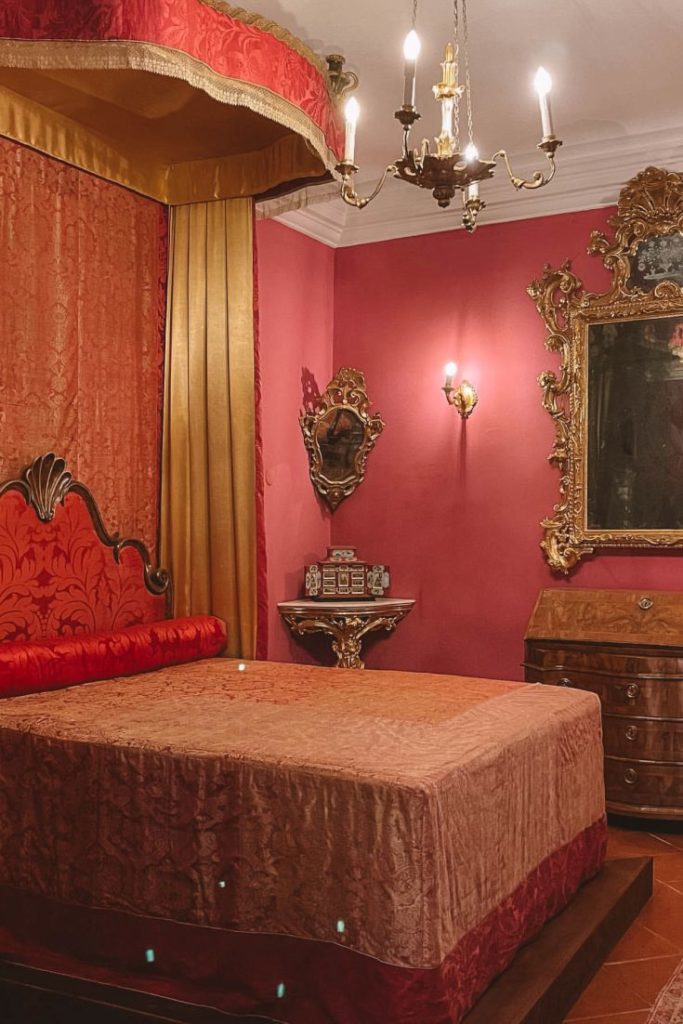
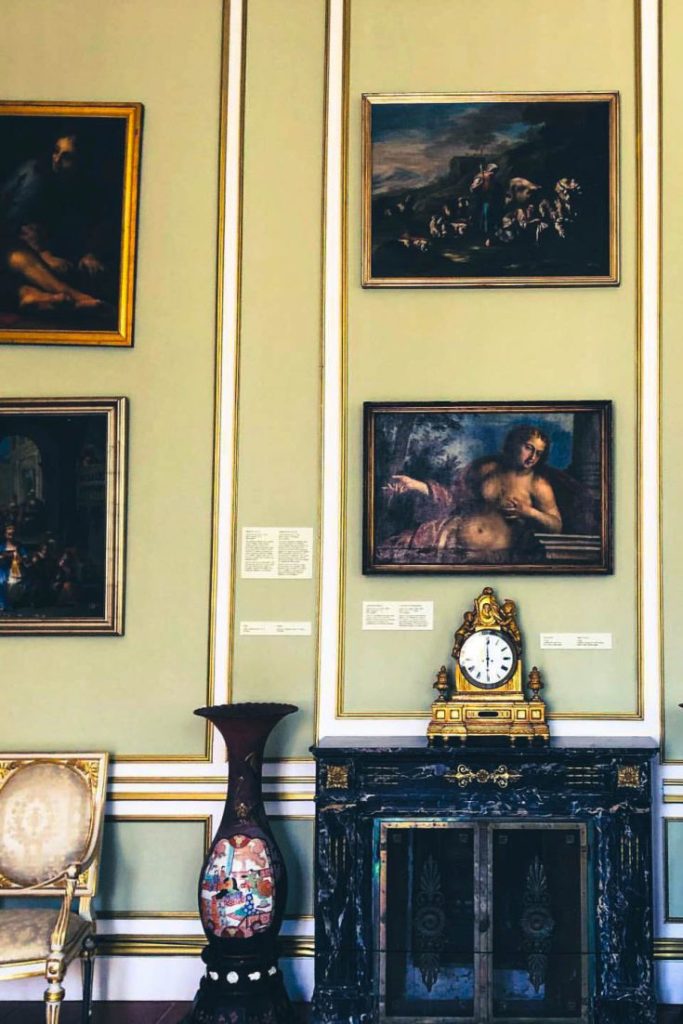
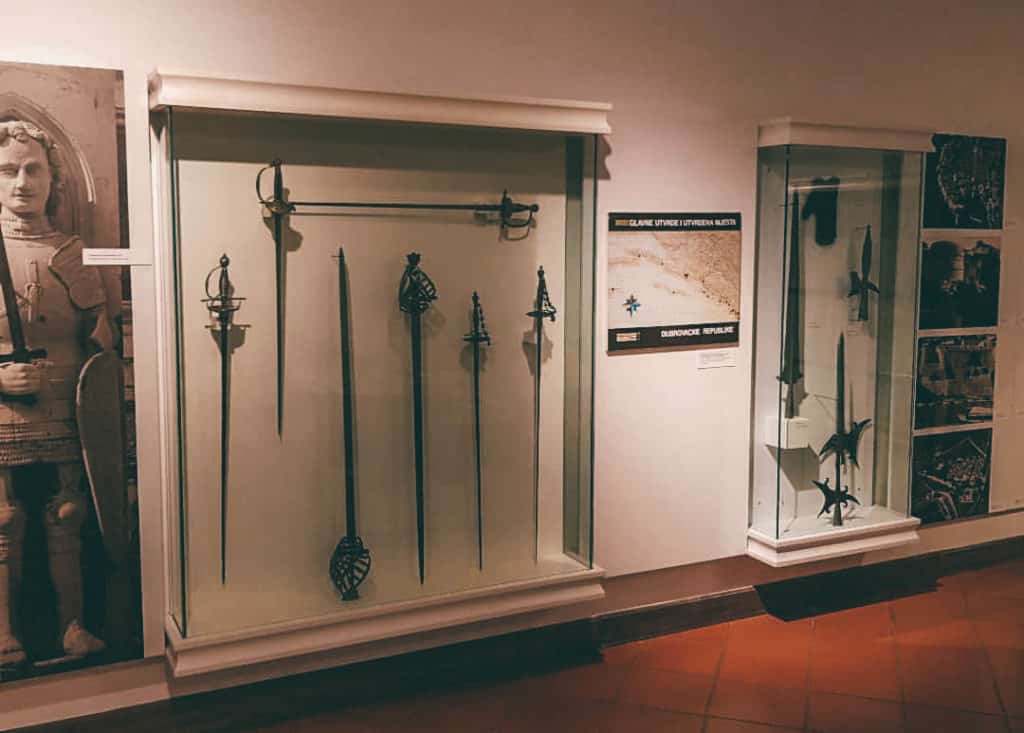
Are you looking for a dose of culture?
The museum’s fifteen collections offer a wealth of art and history, featuring everything from paintings and printmaking to furniture and textiles, ceramics and metals, icons and glass, photographs and photographic materials, miscellanea and documents, postcards, weapons, and numismatics.
Here are the collections you can find in the Cultural Historical Museum:
- Paintings and Printmaking
- Furniture and Textiles
- Ceramics and Metals
- Icons and Glass
- Photographs and Photographic Materials
- Miscellanea and Documents
- Postcards
- Weapons
- Numismatics
- Archaeology
Things to Know Before You Go
- History and art admirers should not miss visiting the Rector’s Palace.
- It is necessary to purchase an admission ticket; we recommend Dubrovnik Pass.
- Wheelchair users are only able to access the ground floor.
How to Get There
Rector’s Palace is between Saint Blaise’s Church and the Cathedral on Pred Dvorom street in Old Town Dubrovnik. Walk to the end of Stradun street from Pile Gate, turn right at the bell tower, and continue towards the cathedral.
Pedestrians are the only ones allowed in Old Town, so if you are driving, park outside the city and walk or take a bus.
If you love learning about the history of a place when you visit, the Cultural-historical museum is the perfect attraction for you! This museum is full of fascinating information about Dubrovnik’s past. So be sure to add it to your itinerary and spend some time discovering all that this incredible city has to offer.
Frequently Asked Questions
What is the Rector's palace Dubrovnik entrance fee?
Dubrovnik Pass includes the entrance fee to the Rector's Palace; otherwise, you can buy a single ticket. The entrance fee for adults is €15, while students and children pay €8. Daily hours of the palace and museum are 9:00-18:00 (16:00 in the winter). There is no admission to the museums in Dubrovnik on Wednesdays, Christmas Day, New Year's Eve, and St Blaise's day.
Is a visit to the Rector's Palace worth it?
Dubrovnik Pass is not just for walking along the walls, but also for accessing a few different locations. This was by far the best Dubrovnik museum. It is probably the only attraction would say is worth paying tickets if you don't have the Pass. The architecture is lovely, and there are many rooms filled with interesting displays.
Sonja is a travel writer and cultural heritage enthusiast based in Dubrovnik. With years of experience exploring Croatia's historic sites, she shares insider knowledge about the region's art, architecture, and traditions.

